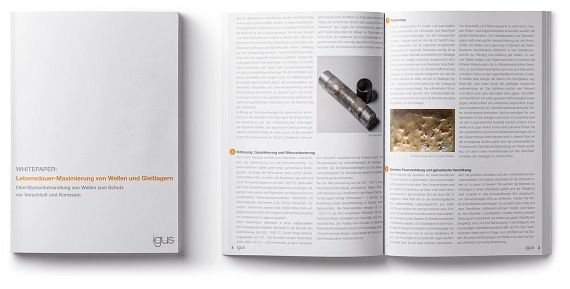iglidur shaft materials



Shaft materials
The shaft is, apart from the plain bearing itself, the most important parameter in a bearing system. It is in direct contact with the bearing, and like the bearing, it is affected by relative motion. The shaft will wear in any case. Modern bearing systems however are designed in a way that the wear of the shafts is so small that it cannot be detected with traditional methods of measurement technology. Shafts can be distinguished and classified according to their hardness and according to the surface finish.Coefficient of friction
The hardness of the shaft also plays an important role. When the shafts are less hard, the shaft is worn smooth during the break-in phase. Abrasive points are worn off and the surface is rebuilt. For some materials, this effect has positive influences, and the wear resistance of the polymer bearing increases.
In the following diagrams, the most important shaft materials are listed and the iglidur materials that are best suited are compared. For easier comparison, the scaling of the wear axis is the same in all graphs.
The low wear results of the systems with hard-chromed shafts are especially impressive. This very hard, but also smooth shaft gives excellent results on the wear behaviour with many bearing combinations. The wear of many iglidur plain bearings is lower on this shaft than on any other shaft material tested. However, it should be pointed out that because of the low surface roughness, the danger of stick-slip on hard-chromed shafts is especially high.






White paper: Maximising the service life of shafts and plain bearings
Amongst other things, the white paper covers the following topics:- The problem: downtime due to maintenance
- Galvanising: hot dip galvanising and electro-galvanising
- Nitriding: gas nitriding and nitrocarburisation hard-chromed shafts
- Case study: heavy-duty tests with iglidur® materials
- Product development through persistent research
- Technology and market outlook
Download now for free (PDF)
